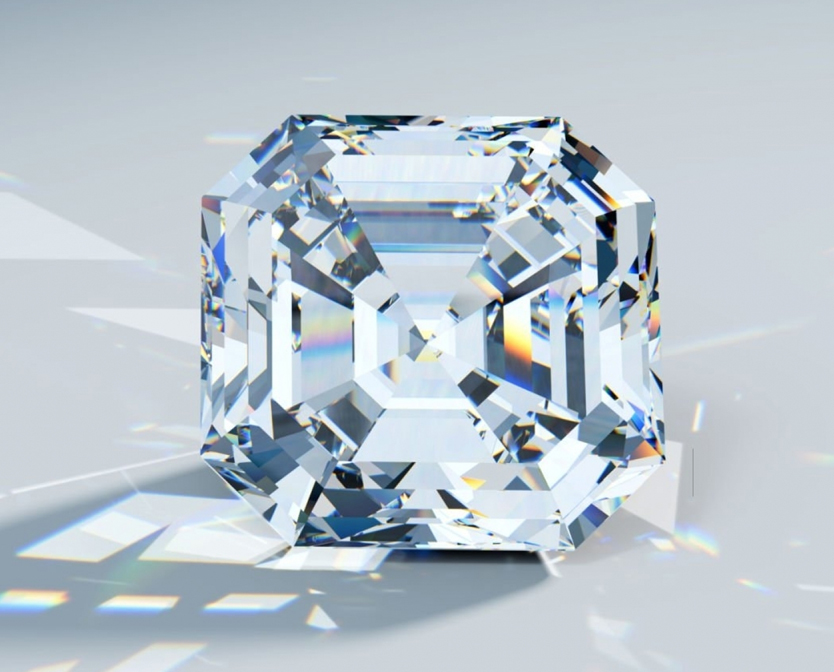The Javda Diamond Education Guide is available for assistance. It offers the necessary tools and information to make the process easier.
The Gemological Institute of America (GIA) is one of the most reputable and well-known gemological laboratories in the world. GIA diamond certificates are trusted for their accuracy and reliability. You can rely on them to assess the diamond quality and value.
Each diamond is unique, and multiple factors determine its price. Concentrate on the aspects that matter most to you, and select a radiant cut diamond.
Meeting personal criteria for aesthetics and worth is crucial in selecting a diamond. At JavdaJewelry, we recognize that everyone's diamond requirements vary.
Javda offers a diverse selection of diamond shapes, catering to a wide range of preferences and styles. Javda offers many diamond options, from classic round brilliant cut diamond to modern princess cuts, for customers to choose from.
There are different types of cuts available. One of them is the emerald cut diamonds, which has step-cut facets and a vintage style. Another type is the radiant cut, which has the sparkle diamond. Javda offers different diamond shapes for customers to find the right fit for their jewelry and personal preferences.
You can talk to a diamond expert who will help you choose a diamond or answer any questions you have. Call 1(833)283-4878 now.
The Anatomy of a Diamond
Understanding the process of diamond formation is helpful, but do not confuse it with the quality of its cut. We should give due importance to grading report. The diamond cuts graded the diamond including its different elements and evaluates their cutting quality.
The diameter of a diamond refers to the broadest width of its girdle. Fancy shaped diamonds use the smallest diameter.
- Table -
The table refers to the flat surface located at the top of a diamond. The diamond table is the largest part of the diamond and is located at the top, also known as the summit.
- Crown -
The crown refers to the top section of the diamond, extending from the table to the girdle.
- Girdle -
This refers to the thin band that encircles the broadest part of the diamond.
- Pavilion -
This is the name given to the lower portion of the diamond, extending from the girdle to the culet.
The culet is a tiny facet located at the diamond's bottom point. It might not be readily apparent without magnification. Depth is the measurement of the diamond from its top surface, known as the table, to its culet.
Diamond Worth: The Four C's
When buying a diamond, it's crucial to learn about its classification. You should understand the four main aspects: Cut, Color, Clarity, and Carat Weight.
Diamond Cut
- Reflection -
A) When light hits a diamond, it reflects back, which we call external reflection.
- Bending of Light -
B) The rest of the beam enters the gem and then reflects towards the diamond's center. Refraction is the term used for this.
- Dispersion -
C) The ray of light return to the surface, and people see it as the colors of the spectrum. Dispersion is the term used to describe this.
The Cut is the element that dictates the sparkle of a diamond. A round diamond has 58 sides: 33 on top, 24 on bottom, and 1 at the bottom point. When cutting the stone, you must place each of the diamond's facets in exact geometric relation to one another. Skilled diamond cutters ideal cut diamonds well without sacrificing proportions to make them heavier.
Clarity of Diamonds
- FL-EF :
Flawless or Internally Flawless. No inclusions inside.
- VVS1-VVS2 :
Extremely minute inclusions. Very hard to spot even under 10x magnification.
- VS1-VS2 :
Minute inclusions. Detectable under 10x magnification and occasionally visible to the unaided eye.
- SI1-SI2 :
Small inclusions. Detectable under 10x magnification and might be noticeable to the unaided eye.
- I1-I2-I3 :
Imperfect. Inclusions are noticeable under 10x magnification and usually visible to the unaided eye.
The quantity, position, magnitude, and kind of inclusions found in the gem determine the transparency of a diamond. A jeweler's magnifying glass can reveal an inclusion, which is a flaw or tiny mineral in a gem. The less inclusions a diamond possesses, the more transparent, radiant, and costly it becomes. A diamond labeled as "Flawless" is devoid of any inclusions, making it exceedingly rare and precious.
Diamond Hue
Diamonds that are colorless or nearly colorless hold the highest value.ost diamonds look colorless, but many have a bit of yellow or light brown when seen through a jeweler's magnifying glass.
The value of a diamond can increases significantly if the diamond color grade improves. This increase can be in the thousands of dollars per carat. The actual amount of increase depends on the size of the diamond. A traditional engagement rings is usually colorless or near colorless.
Nature can produce fancy diamonds, also known as "Fancy diamonds," in shades of red, pink, blue, green, and deep yellow. The GIA grades colorless diamonds using an alphabetical scale in the US and globally. Graders assign D, E, and F grades to diamonds without color or uncommon white. D grade diamonds are rare and highly valuable.
Weight of Diamonds in Carats
We quantify diamonds in carats (ct.), and we further subdivide each carat into 100 points to determine their weight. For instance: 1ct. equals 100 points, 1/2 ct. equals 50 points, and so on.
The carat's weight alone doesn't matter much. The diamond's clarity, cut, and colorare also important. A large diamond that lacks luster, purity, and superior color isn't particularly valuable.
However, because larger diamonds are less common than smaller ones, their value increases significantly as their carat weight increases. A 3.0 carat diamond is always worth more than three 1.0 carat diamonds of the same quality. All diamonds are unique. Consider color, cut, clarity, and carat weight when buying diamond jewelry.







